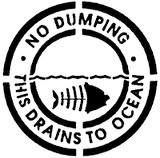
STORM WATTER POLLUTION PREVENTION PLANNING (SWPPP)
WHAT IS SWPPP AND WHAT ARE THE LAWS
Storm Water Pollution Prevention Plans Have been advised and in some cases required since the late 1990’s, however in 2007 laws were passed requiring that all development abide by and enforce pollution prevention practices.
Marshall Engineering Group has over 12 years with SWPPP Reporting LICENSED AND CERTIFIED

STANDARD URBIN STORM-WATER MITIGATION PLAN (SUSMP)
WHAT YOU NEED TO KNOW
ON DECEMBER 13, 2001, the Regional Water Quality Control Board issued a Municipal Storm Water National Pollution Discharge Elimination System Permit Requiring all new development and redevelopment projects to incorporate storm water mitigation measures, effective september 2, 2002
Depending on the type of project, ether a Standard Urban Storm-water Mitigation Plan (SUSMP) or a Site Specific Mitigation Plan (SMP)is required to reduce the quality and improve the quality of rainfall runoff that leaves the site. Developers are required to comply with these regulations by visiting the Watershed Protection Division (WPD) in the design phase of there projects.

Who uses LEED
Architects, real estate professionals, facility managers, engineers, interior designers, landscape architects, construction managers, lenders and government officials all use LEED to help transform the built environment to sustainability. State and local governments across the country are adopting LEED for public-owned and public-funded buildings; there are LEED initiatives in federal agencies, including the Departments of Defense, Agriculture, Energy, and State; and LEED projects are in countries worldwide, including Canada, Brazil, Mexico and India.

LEED
LEED rating systems are developed through an open, consensus-based process led by LEED committees. Each volunteer committee is composed of a diverse group of practitioners and experts representing a cross-section of the building and construction industry. The key elements of USGBC's consensus process include a balanced and transparent committee structure, technical advisory groups that ensure scientific consistency and rigor, opportunities for stakeholder comment and review, member ballot of new rating systems, and a fair and open appeals process.

SWPPP Topographic Serveying Topographic Servey Topography mapping SWESUMP Water Retention Land Planning FEMA Elevation Certificates for the National Flood Insurance Program LEED® Design & Planning CIVIL ENGINEERING Geomatic Engineering GPS and Robotic surveying CYRAX and 3-D Laser Scanning Stormwater Inspection, Compliance & Reporting
Why LEED
In todays world there are many motivations to go with LEED options and the incentives continue to expand.



SWPPP
SUSMP
DEMOLITION GRAVEL ESTIMATION
AERIAL SERVEY
TOPOGRAPHIC SURVEY
STATE CERTIFIED QSD
AUTOCAD
GPS & ROBOTIC’S
STORM WATTER QUALITY
LICA ENGINEERING EQUIPMENT
LEED®
BOUNDARY IDENTIFICATION
LOT LINE ADJUSTMENT
CONSTRUCTION STAKING
STRUCTURAL ANALYSIS




